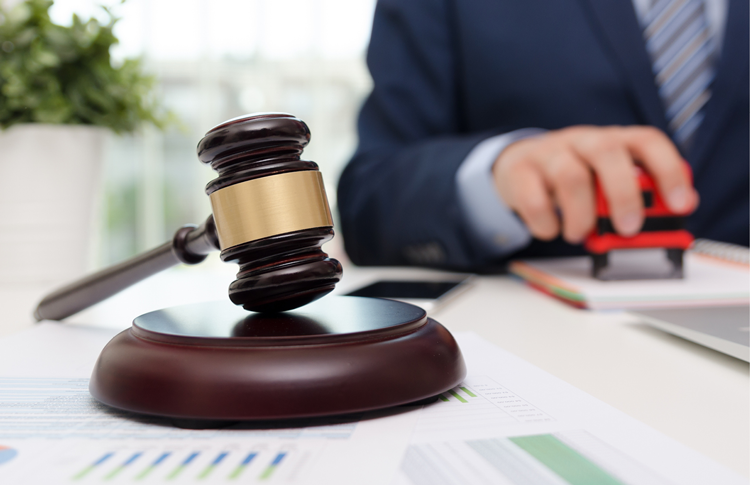
When a company becomes involved in a patent infringement litigation, in-house counsels need to understand the prospects of the litigation, explain them internally, and consider necessary measures. In this case, the “prospects of the litigation” usually include (1) the possibility of winning the case and (2) the trial schedule. It should be noted, however, that in patent infringement litigation, each of the above (1) and (2) is difficult to predict due to the peculiarity of the trial process.
One example of this peculiarity of the trial process is the “double-track”. A company that is the defendant in an infringement litigation can not only assert a defence of patent invalidation (Article 104-3 of the Patent Act), but also request a patent invalidation trial before the JPO (Article 123 of the Patent Act). In such cases, the validity of the patent is disputed both in the court and the JPO (as well as in litigation for revocation of a trial decision by the JPO).
- With regard to the possibility of winning the case, it is said that in recent years in Japan there has been a growing tendency toward pro-patent judgments in favour of the patentee in both the courts and the JPO. One of the circumstances that make it difficult to predict the possibility of winning a case is that the scope of patent claims (scope of rights) may be corrected. Against the defendant’s assertion of invalidation of a patent, the plaintiff in infringement litigation can make a request for a trial for correction before the JPO (Article 126 of the Patent Act) or a request for correction in the invalidation trial procedure (Article 134-2 and 3 of the Patent Act), and can assert, in the court, a counter-argument of correction (or a new cause of claim if the correction is fixed). As a result of the correction, there is a possibility that the patent will be judged to be valid. Since the defendant cannot know the contents of the plaintiff's correction in advance, it is difficult for the defendant to accurately predict the possibility of finally winning the case by considering all the possible corrections at the initial stage of the infringement litigation.
- In terms of the trial schedule, patent infringement litigation is heard quickly, even though many cases are specialized and large-scale. According to the statistics published by the Intellectual Property High Court on its website, the average trial period of IPR-related civil cases in the first instance of district courts nationwide in 2020 was 14.7 months. Here too, the prospect is uncertain because the possibility of correction by the plaintiff will affect the trial schedule. If the plaintiff asserts a counterargument of correction in the course of the court hearing, the scope of claims to be examined for infringement and invalidity arguments will change, and the court will need more time to examine the case. However, depending on the timing of the assertion, it is natural that the counterargument of correction may be rejected as an untimely method of defence.
As described above, in-house counsels need to carefully consider (1) the possibility of winning the case and (2) the trial schedule, while taking into account various possibilities arising from the peculiarities of patent infringement litigation and consulting with outside experts as necessary.
MASAHIKO MATSUNO
Associate
Nakamura & Partners
近時の裁判所・特許庁の傾向を踏まえた特許権侵害訴訟への対応
企業が特許権侵害訴訟の当事者となった場合、企業内弁護士は、訴訟の見通しを把握し、社内に説明して、必要な対応を検討する必要がある。この場合、「訴訟の見通し」には、通常、(1)勝訴の可能性と、(2)審理スケジュールが含まれる。ところが、特許権侵害訴訟では、審理の特殊性ゆえ、上記の(1)、(2)のそれぞれについて、予測が難しい面があることに留意が必要である。
審理の特殊性を示す一つの例が「ダブルトラック」である。侵害訴訟の被告となった企業は、特許無効の抗弁(特許法104条の3)を主張することができるだけでなく、特許庁に対して特許無効審判を請求することができる(同123条)。そのような場合には、裁判所と特許庁(さらに特許庁の審決に対する審決取消訴訟)の双方で特許の有効性が争われることとなる。
- 勝訴の可能性については、近年、日本では、裁判所及び特許庁の双方において、特許権者に有利な判断がなされるプロパテントの傾向が強まっているともいわれる。勝訴可能性の予測が困難となる事情の一つとして、特許請求の範囲(権利範囲)が訂正され得ることが挙げられる。侵害訴訟における原告は、被告による特許無効の抗弁に対し、特許庁に対する訂正審判の請求(特許法126条)又は無効審判の手続における訂正請求(同134条の2、3)とともに、裁判所において訂正の再抗弁(訂正が確定した場合は、新たな請求原因)を主張することができる。訂正の結果、特許が有効と判断される可能性もある。被告は、事前に原告の訂正内容を知ることはできないから、侵害訴訟の当初の段階で、あらゆる訂正の可能性を考慮して、最終的な勝訴の可能性を正確に予測することは困難である。
- 審理スケジュールという点では、特許権侵害訴訟は、専門的かつ大規模な事件が多い割には迅速な審理が行われている。知財高裁がホームページにおいて公開している統計によれば、2020年の全国地裁第一審における知的財産権関係民事事件の平均審理期間は、14.7箇月である。ここでも、原告による訂正の可能性が、審理スケジュールに影響を与えるため、見通しが不透明なものとなっている。原告が裁判所の審理の過程において訂正の再抗弁を主張すれば、充足論や無効論の審理対象となる特許請求の範囲が変わるため、裁判所は審理に時間を要することとなる。もっとも、主張するタイミングによっては、訂正の再抗弁が時機に後れた攻撃防御方法として却下される可能性があることは当然である。
以上のとおり、企業内弁護士は、(1)勝訴の可能性と、(2)審理スケジュールについて、特許権侵害訴訟の特殊性に起因する様々な可能性を考慮し、必要に応じて外部の専門家と協議したうえ、慎重に検討する必要がある。
松野仁彦
アソシエイト
中村合同特許法律事務所
To contact the editorial team, please email ALBEditor@thomsonreuters.com.